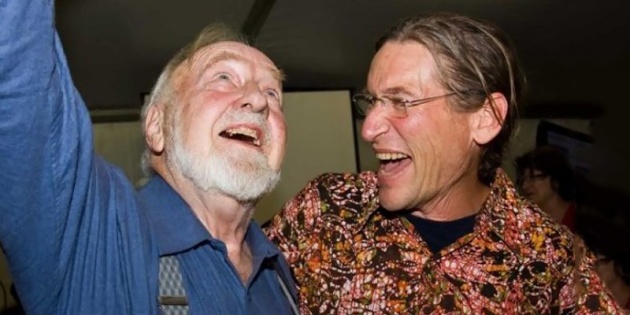Changing The World One Garden At A Time

Permaculture: Revolution in Disguise
David Holmgren, co-founder of Permaculture, reflects on the past 35 years of his involvement in a movement that has gone global.
What first inspired him to begin this journey?
“It is perhaps surprising to people that when I was a student in Hobart Design School in 1974, there was a huge interest in what today we would call sustainability. It was one year after the oil crisis of 1973 that changed a lot of thinking around the world. And it was two years after the Club of Rome Limit to Growth report which really showed that industrial society couldn’t keep going like it was.”
“So a lot of these ideas were around at that time and my interest was really in the overlap between landscape architecture as a design profession, the science of ecology and the practice of agriculture.”
It was at that time that David met Bill Mollison, who was teaching at another university in Hobart, and through their friendship and discussions started to gel the idea of what ultimately became permaculture.

For David and Bill, inspiration for how to solve many of the world’s problems came from nature. They could see how natural ecosystems flourished with no input from humans and wondered if it was possible to create human-based ecosystems based on some simple design principles.
According to Holmgren, the original seed of the idea of permaculture might have come for Bill Mollison in the 1950’s while studying wallaby ecology out in the Australian rainforest. He had a huge breakthrough in thinking about how the ecosystem worked which left him with the idea that, “Gee, we could design one of these (an ecosystem).”
“Mollison was one of these huge thinkers, constantly throwing up ideas, but it wasn’t until we met and I explained the idea of the overlap between the profession of landscape architecture, the practice of agriculture and the science of ecology, that he said, “Oh that’s interesting. How about this for an idea…”
“If in most places nature creates a forest as the most efficient and permanent form of ecosystems on the land, why doesn’t our agriculture look like or at least function like some kind of forest?”

“Nature was the reference point for permaculture to know where are the design rules, the energy laws that govern natural systems… Understanding the design rules and success pathways that existed in nature was really the big wellspring for designing something that works for humans.”
“The other big source of permaculture in terms of inspiration was indigenous traditional and sustainable land use that had proven itself over long periods of time. At the time we were discussing what a few years later would be coined by Reece Jones as ‘fire stick farming’ – the notion that Aborigines were actually deliberately managing and manipulating nature, rather than just wandering around accepting the system as it was. There was both, “How do we work with nature and not be so extreme in intervention (wiping away what we think we don’t want and replacing it with something else). But on the other hand, recognizing that even hunter gatherers were actually managing the landscape for human benefit as well as for larger purposes.”
Drawn originally from the words ‘permanent’ and ‘agriculture’” the initial aim of permaculture was to create a design system that was enduring and wouldn’t deplete its resource base. In more recent years, the description of permaculture has broadened to, ‘Consciously designed landscapes which mimic the patterns and relationships found in nature, while yielding an abundance of food, fibre and energy for provision of local needs.’ People, their buildings and the ways in which they organise themselves are central to permaculture and therefore the overall vision for permaculture has evolved from sustainable or ‘permanent agriculture’ to sustainable or ‘permanent culture’.
Holmgren shares that while permaculture has been popularized as a ‘cool form of organic gardening’… as a design system for both sustainable living and land use it encompasses both the production side (how we plan, grow and build) and the consumption side (how we harvest, share, exchange and consume) of the equation – including our attitudes and our behaviors.
“If we are looking at fundamental changed conditions in the future of sustaining humanity – from millions of years of stored energy in fossil fuels to once again running on renewable energy – then we have to actually redesign the whole of society.
When you say the whole thing, often people mean, “Let’s work out the way we organize global finance first,” whereas a lot of the permaculture strategies are from the bottom up… How do we re-organize our own lives first? Not just because that’s where we have power and control but because that’s a way of understanding how whole systems actually work. Crawling before you run.”
‘Permaculture is Revolution disguised as Organic Gardening.’ ~ Graham Burnett
Watch a video with David Holmgren explaining some simple steps for living more sustainably here >>
Read the full story at http://upliftconnect.com/permaculture-is-revolution



